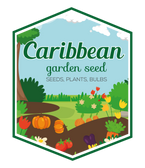
10 Stunning Flower Bulbs to Brighten Your Garden
As spring approaches, the dream of a blooming garden full of vibrant colors and sweet scents becomes more tangible. There’s something truly magical about seeing the first shoots breaking through the soil, heralding the return of life and color to our gardens. This guide is dedicated to helping you choose the most stunning flower bulbs to transform your outdoor space into a dazzling display of nature’s beauty. Whether you’re a seasoned gardener or just starting out, these ten flower bulbs will ensure your garden is a feast for the eyes and the soul.
1. Tulips: Spring’s Colorful Harbingers
When one thinks of spring, tulips often come to mind with their vibrant array of colors and shapes. These floral gems are a testament to the variety and beauty nature offers. Tulips can bring an early pop of color to your garden, with options ranging from classic reds to exotic purples and even fringed varieties. Planting these bulbs in the fall ensures a spring filled with growth and color. It’s fascinating how each tulip variety has its own blooming time, spanning early to late spring, which allows for a staggered display of beauty over several months.
Aside from their visual appeal, tulips also embody the spirit of rebirth and new beginnings, making them a profound symbol in many cultures. It’s this rich symbolism combined with their undeniable beauty that makes tulips a cornerstone of any spring garden. Think about incorporating them in mass plantings for an eye-catching display, or mix them with other early bloomers like daffodils and hyacinths for a layered look. With tulips, the options are only as limited as your imagination.
2. Daffodils: Bright and Cheerful Trumpets
Daffodils, with their bright colors and distinctive shapes, act as a beacon of spring’s arrival. Easy to grow and capable of thriving in a variety of climates, daffodils are a prime choice for both beginner and experienced gardeners. These sunny blooms not only brighten the landscape but are also known for their ability to come back year after year with minimal care, making them a fantastic investment in your garden’s future beauty.
One of the joys of daffodils is their adaptability—they complement nearly any garden setting. Whether planted in rows for a structured look, in naturalized drifts for a casual country feel, or even in containers for those with limited space, daffodils promise to deliver a burst of joy. Plus, their deer-resistant nature makes them a hearty choice for gardens in wildlife-rich areas, ensuring that their blooms arrive for your enjoyment, not for a midnight snack.
3. Hyacinths: Fragrance Powerhouses
The intoxicating fragrance of hyacinths is enough to make them a must-have in any spring garden. These dense spikes of flowers not only look stunning but also fill the air with a sweet, lingering perfume. While their blossoms come in a variety of colors—including pink, white, blue, and purple—it’s their scent that truly sets them apart, acting as a natural air freshener for your outdoor space.
Hyacinths are particularly well-suited for borders or as a vibrant welcome beside walkways, where their fragrance can be most appreciated. They’re also wonderful in container gardens, bringing a touch of spring closer to home. When planting, consider pairing hyacinths with other bulbs that bloom at the same time, such as early tulips or daffodils, to create a cohesive and visually striking display.
4. Crocuses: Jewels of Early Spring
Crocuses are among the first to greet the spring sun, often emerging even while the last traces of winter frost linger on the ground. These small but mighty bulbs produce jewel-toned blossoms in shades of yellow, purple, and white, which can be a delightful surprise against the bleak late-winter landscape. Their low-growing habit makes them ideal for creating carpets of color in lawn areas, under trees, or in rock gardens.
To achieve a natural look with crocuses, consider randomly scattering the bulbs before planting, mimicking how they might appear in the wild. They’re also fantastic for ‘forcing’ indoors, allowing you to enjoy their vibrant colors and sweet fragrance even before the snow has melted outside.
5. Iris: Elegance in Bloom
The iris, with its distinctive shape and array of colors, brings a touch of elegance to any garden. Bearded, Siberian, and Dutch irises are just a few varieties that can range from deep purples and blues to yellows and soft whites. The diversity in their sizes and bloom times allows for continuous beauty throughout the spring and into early summer. Irises are not only beautiful but are relatively easy to care for, requiring just a bit of pre-planning for a successful season.
For a dramatic statement, plant irises in masses. They work exceptionally well along the edges of water features or in traditional flower beds, where their regal blooms can be fully appreciated. Companion planting with early-flowering bulbs like crocuses can create a dynamic display that evolves as the seasons change. Moreover, irises’ ability to thrive in many soil types makes them versatile additions to theme gardens, such as rock or rain gardens, where their striking form and color add depth and interest.

![[Seeds] - Caribbeangardenseed](http://caribbeangardenseed.com/cdn/shop/files/gift-card-gift-card-1_1024x1024_dfa857db-9150-4315-a362-7f0bb3fb9c47_60x28.png?v=1722895789)
